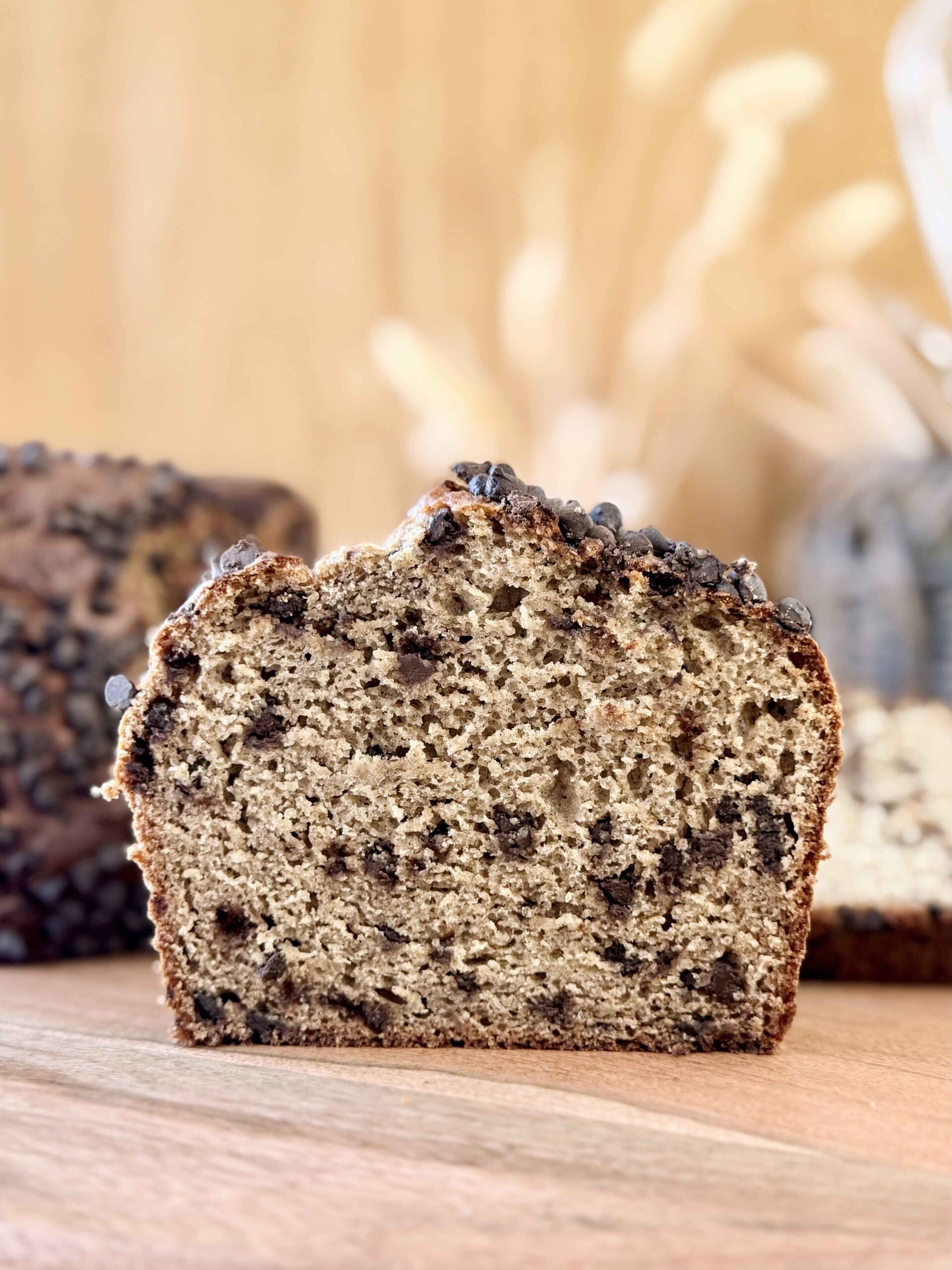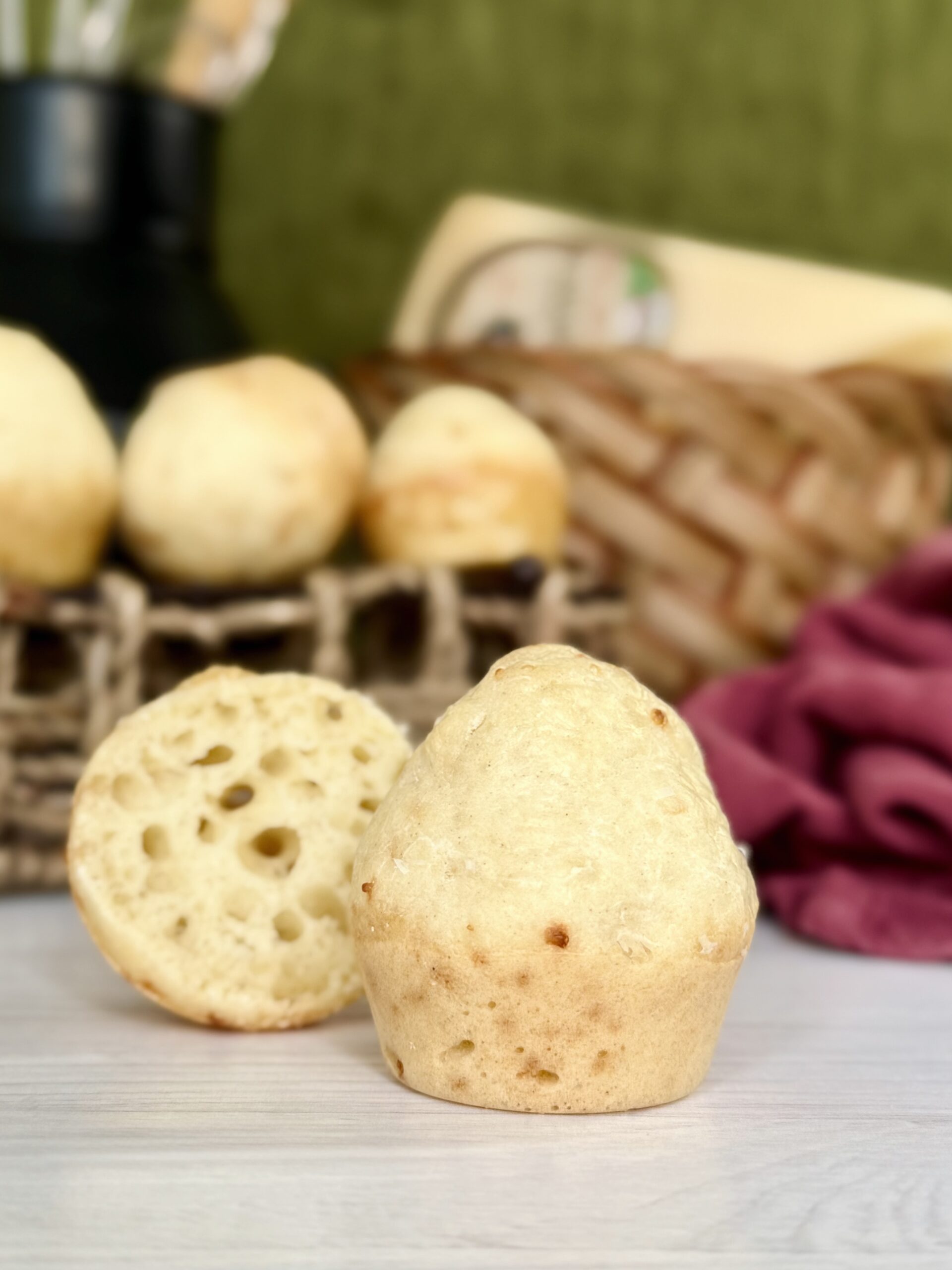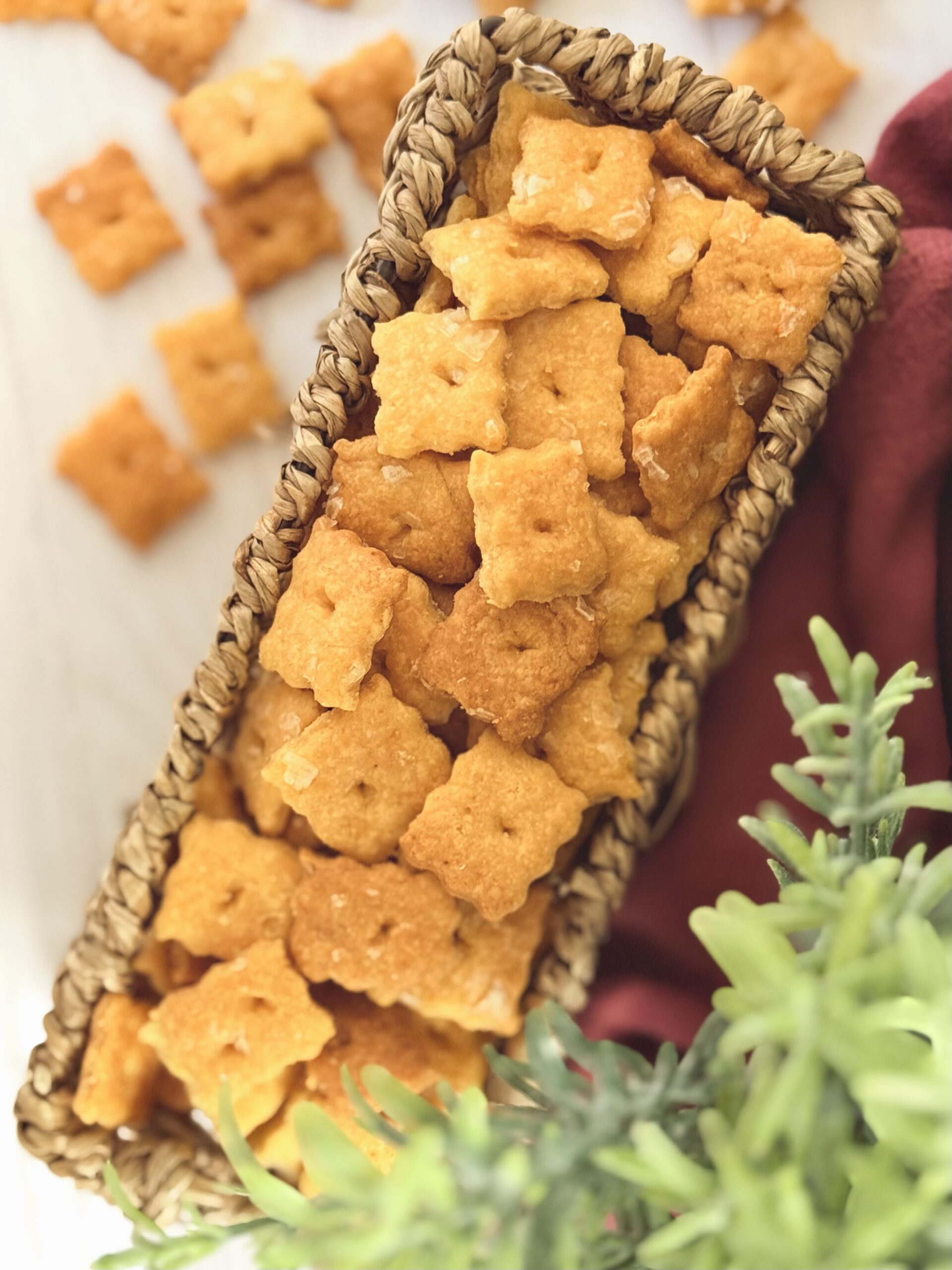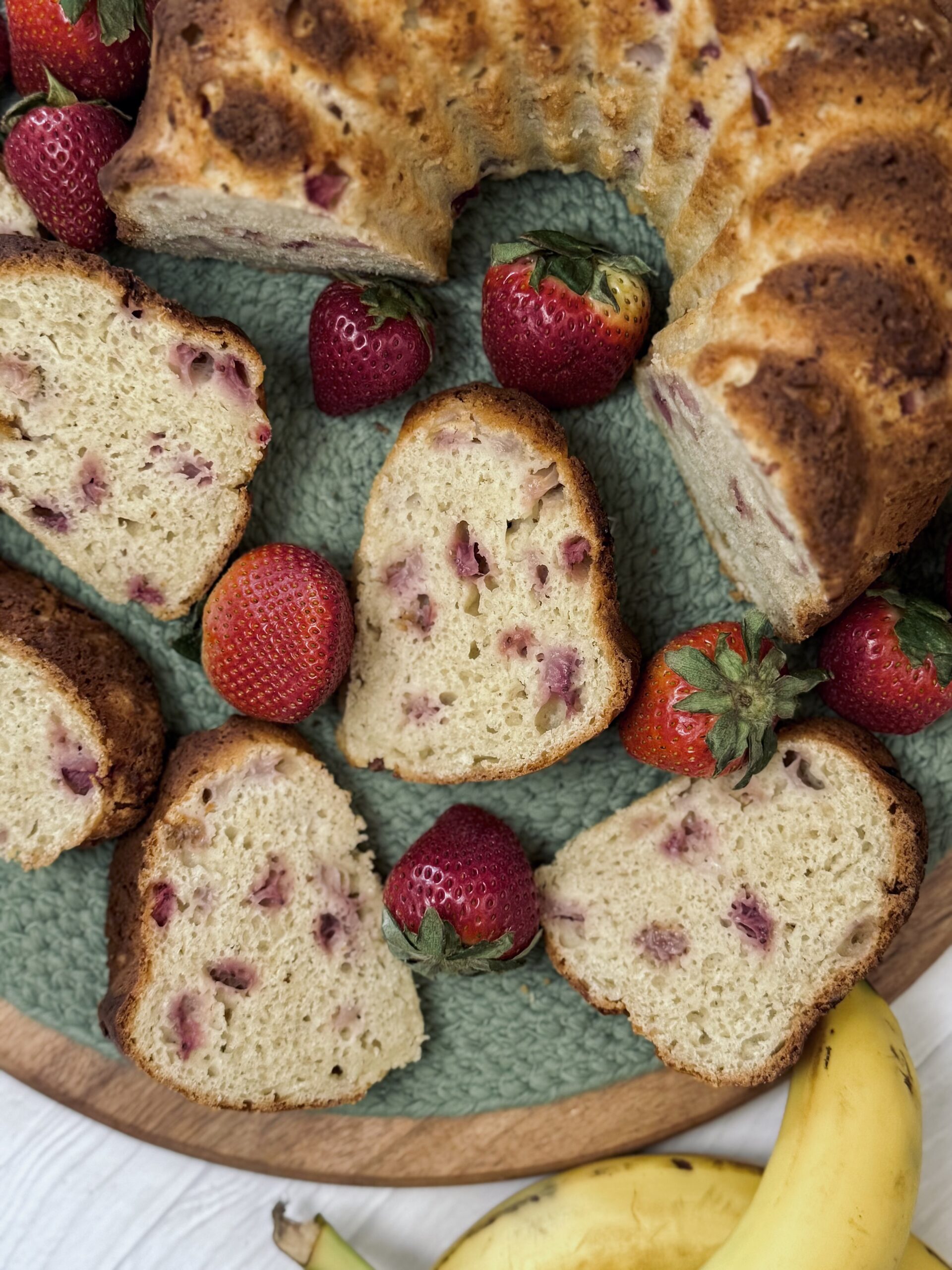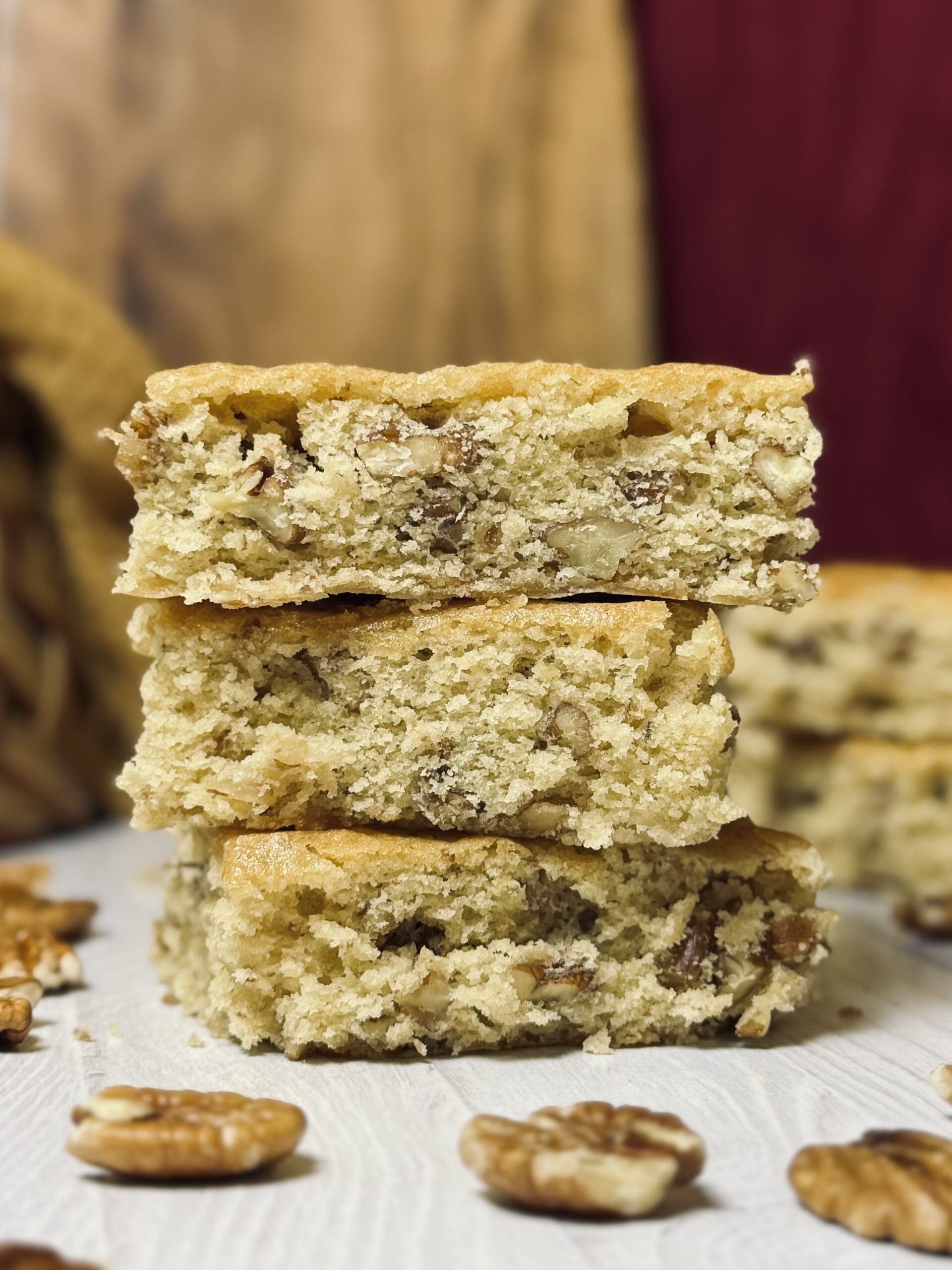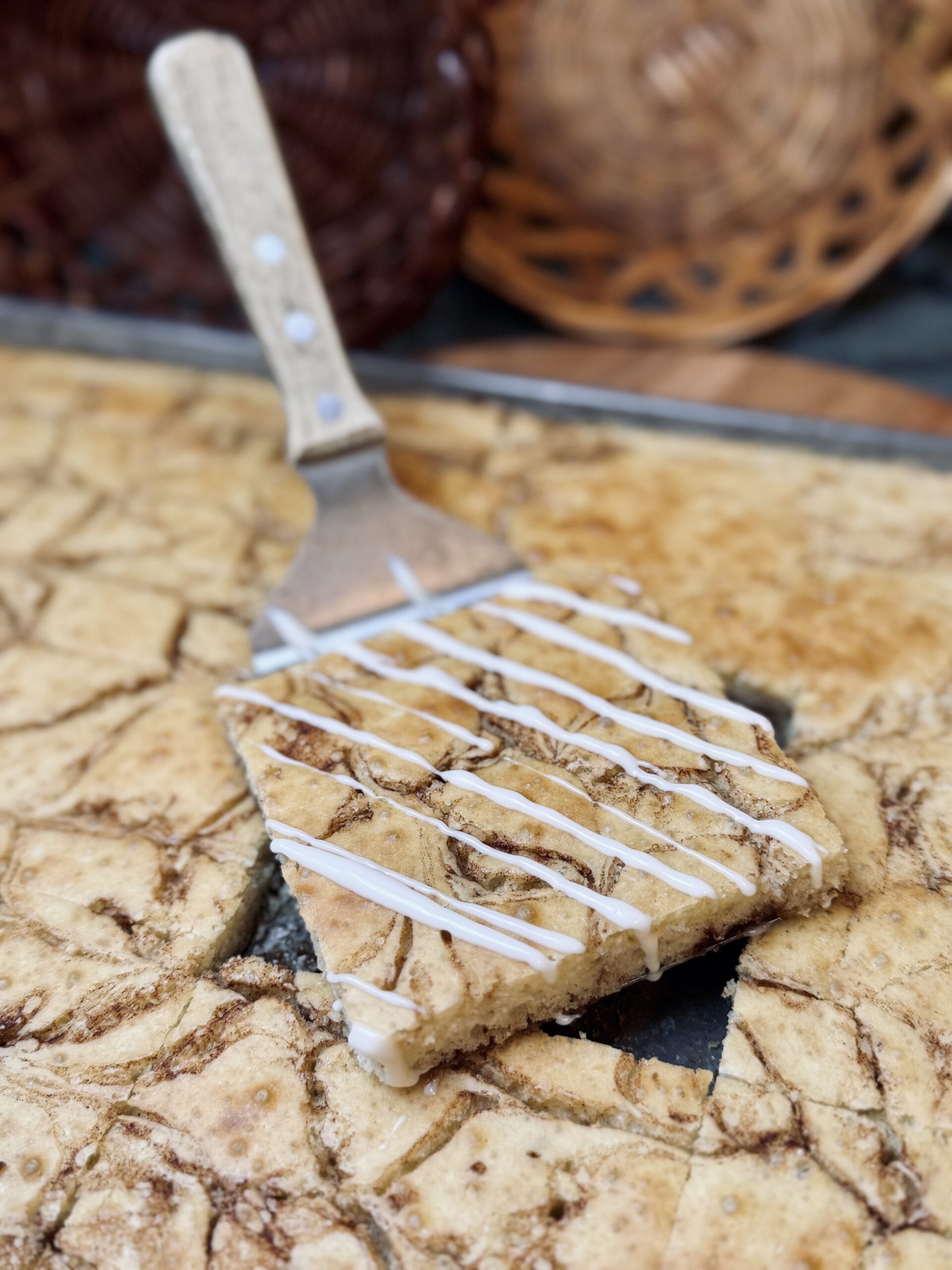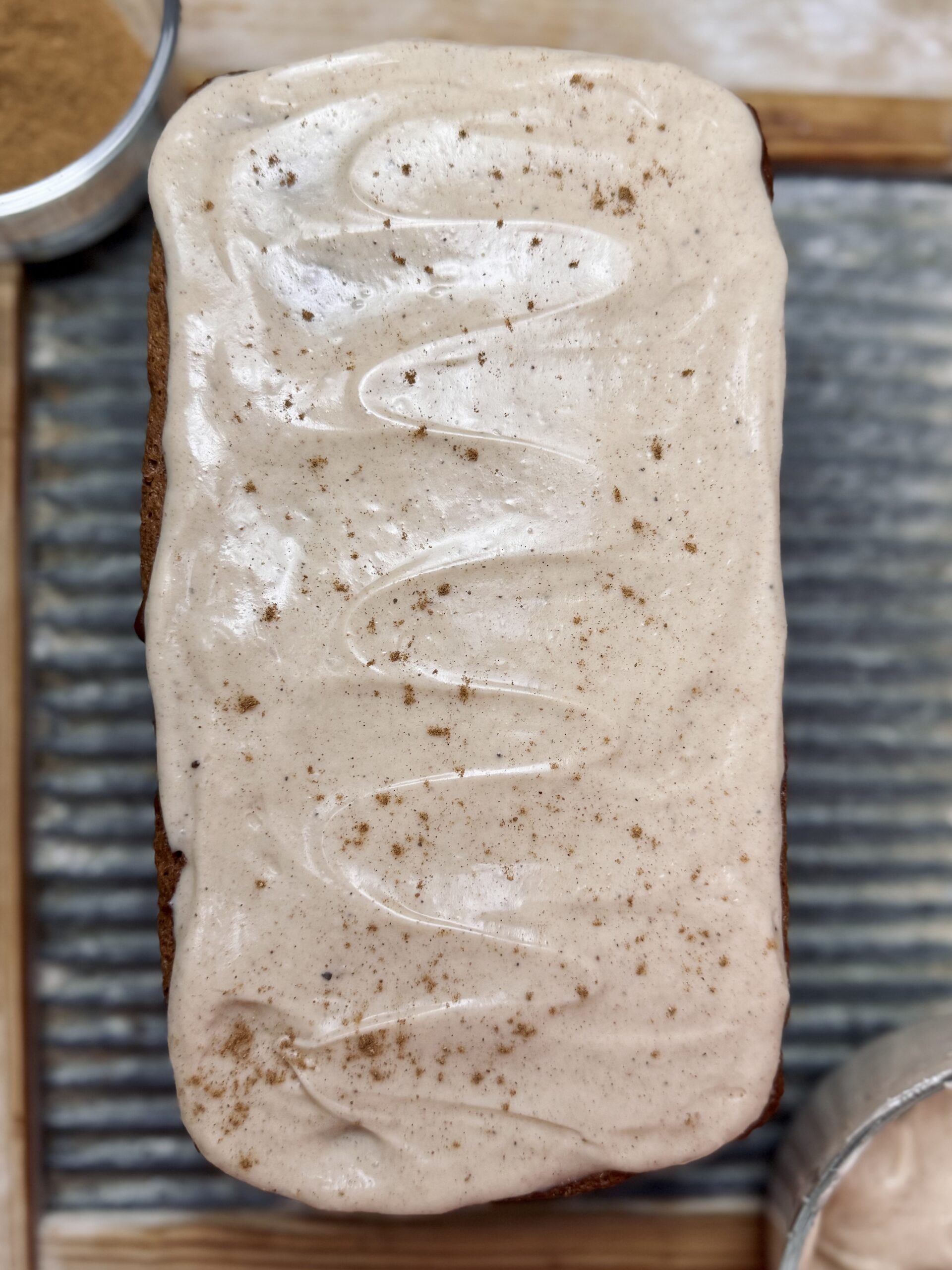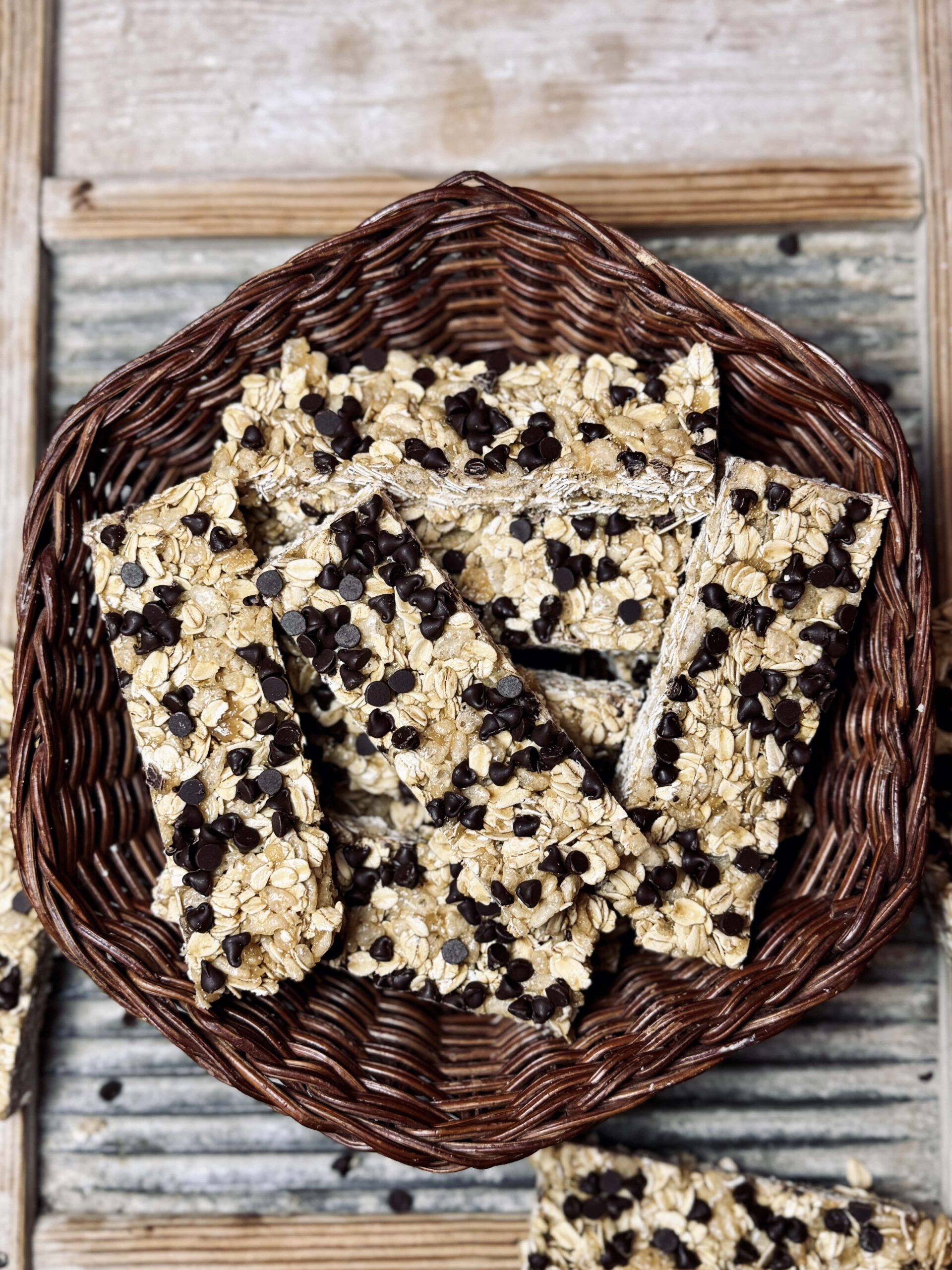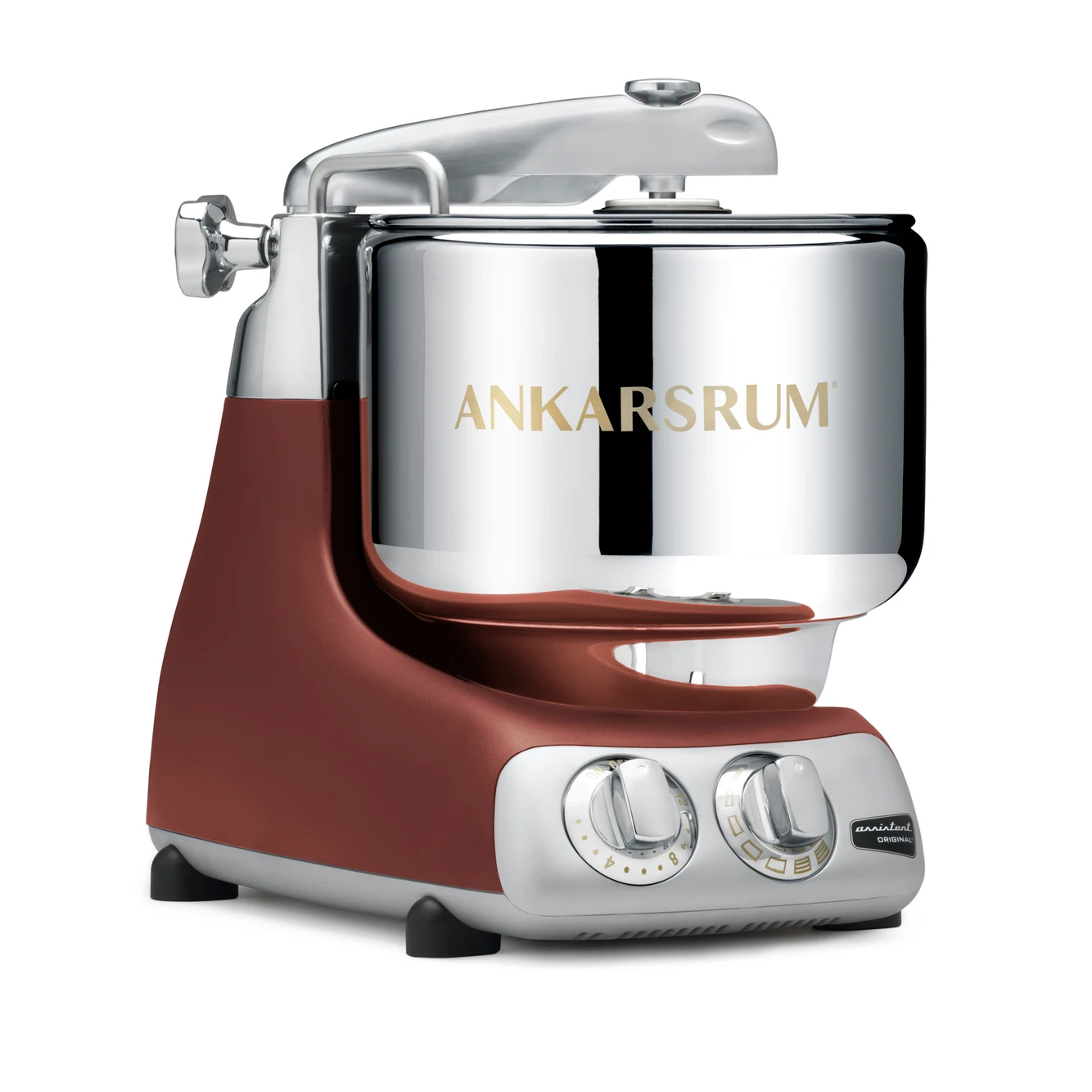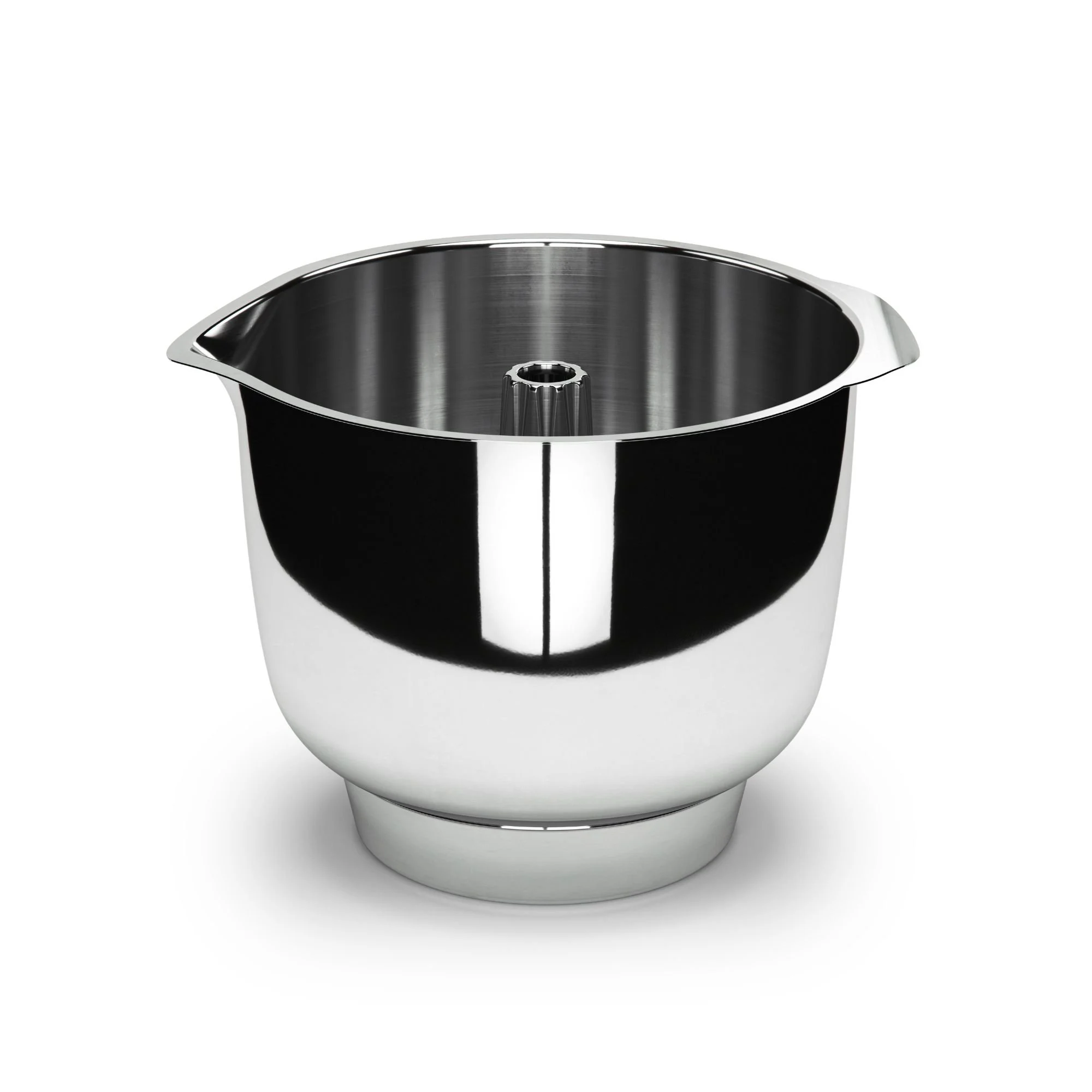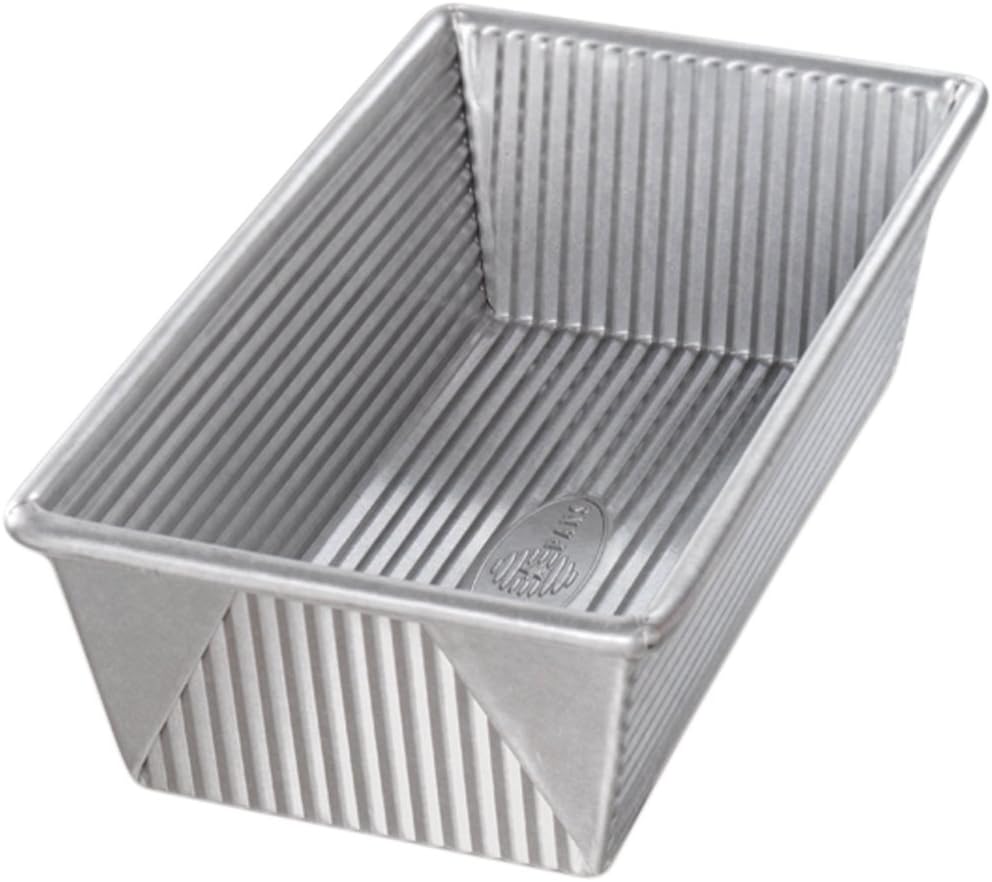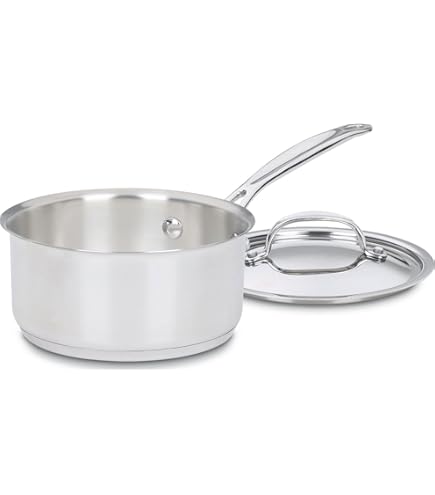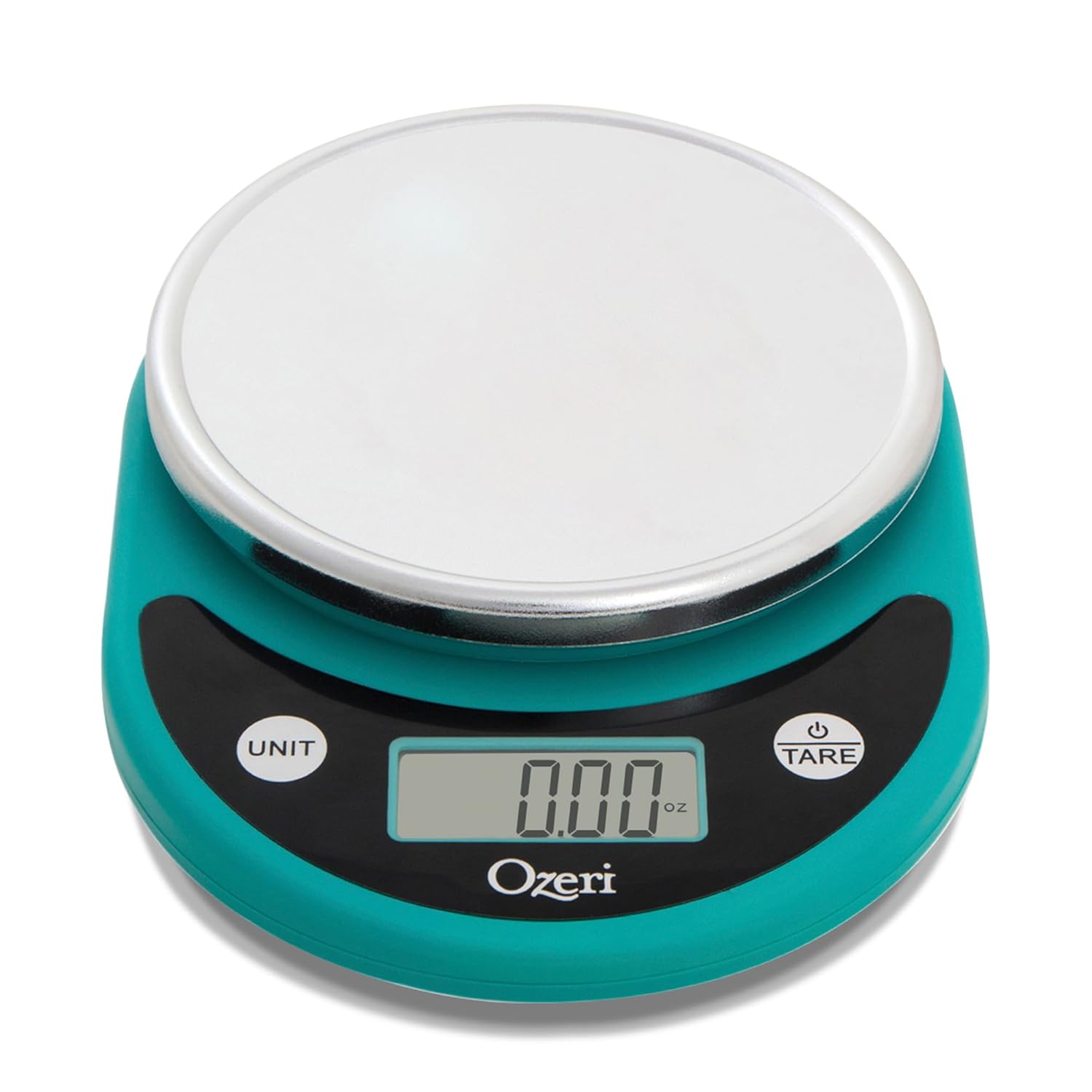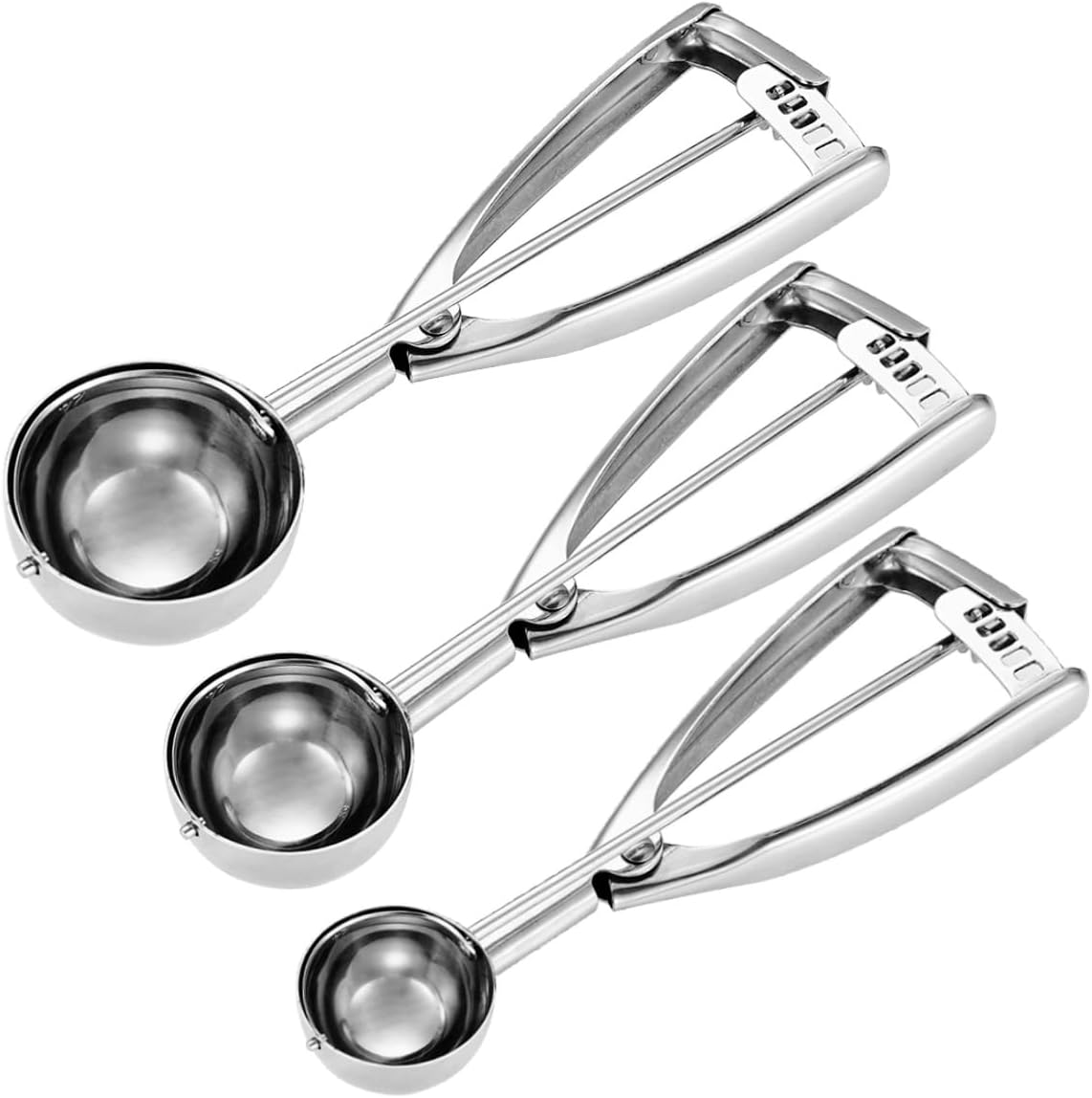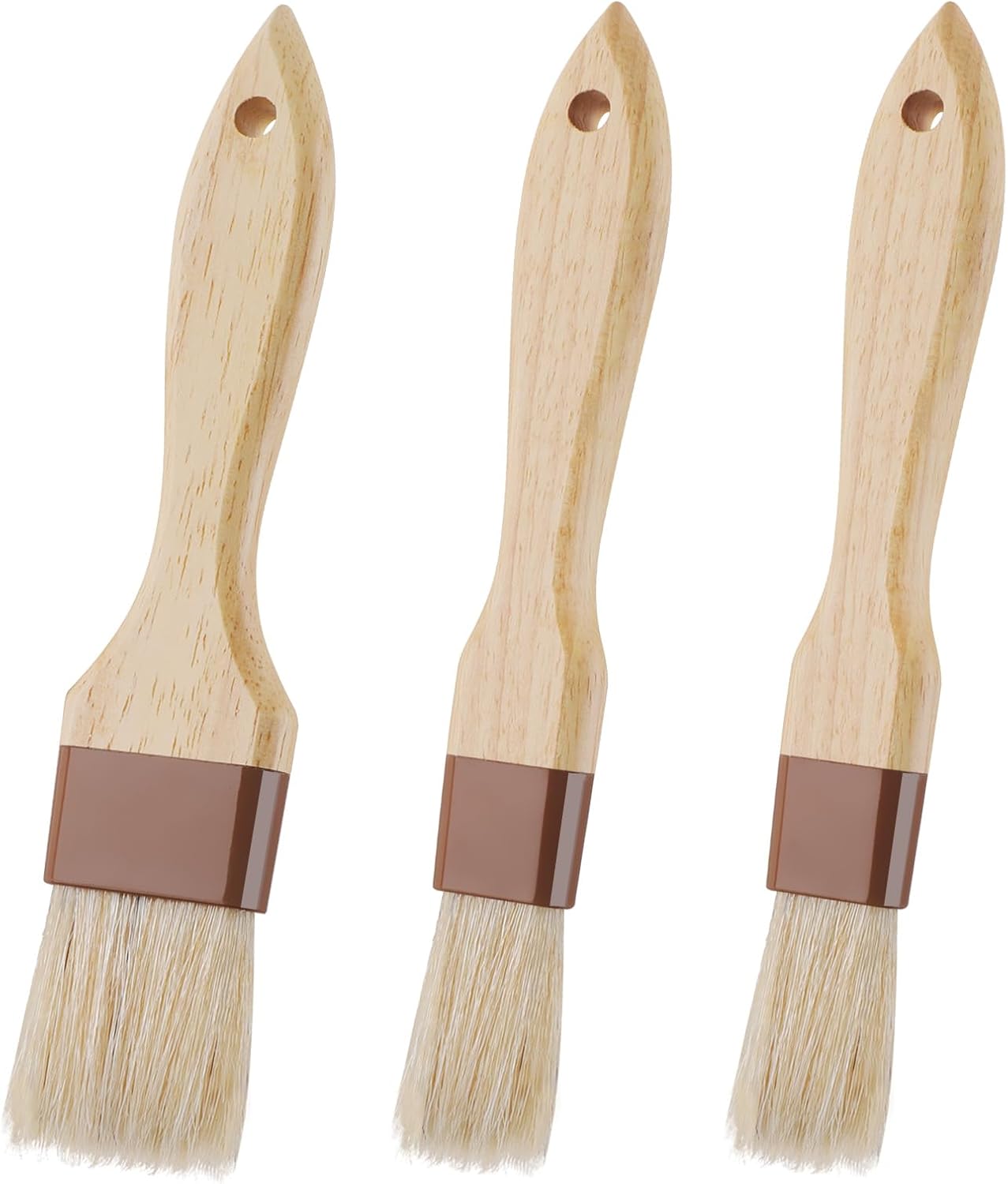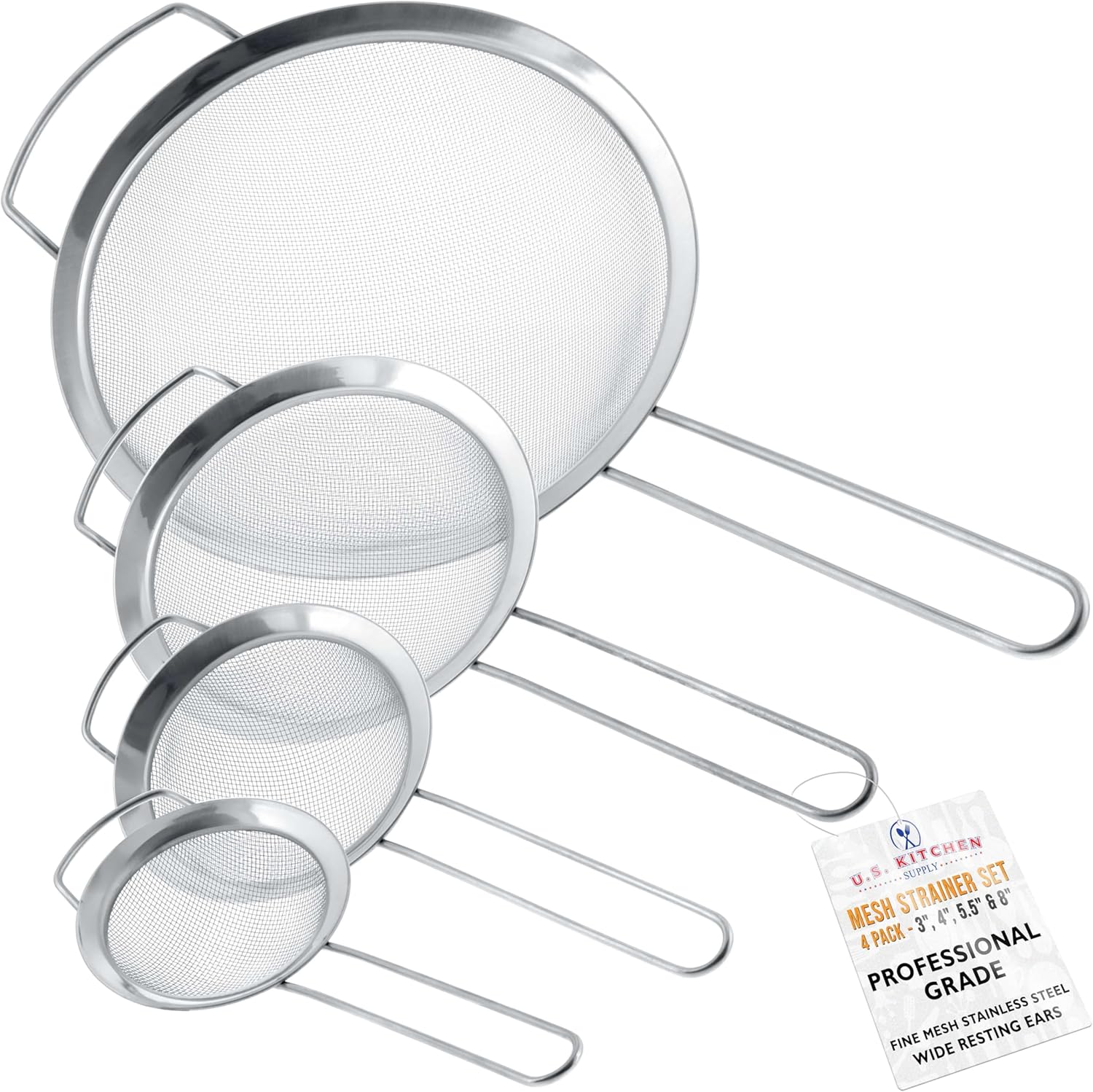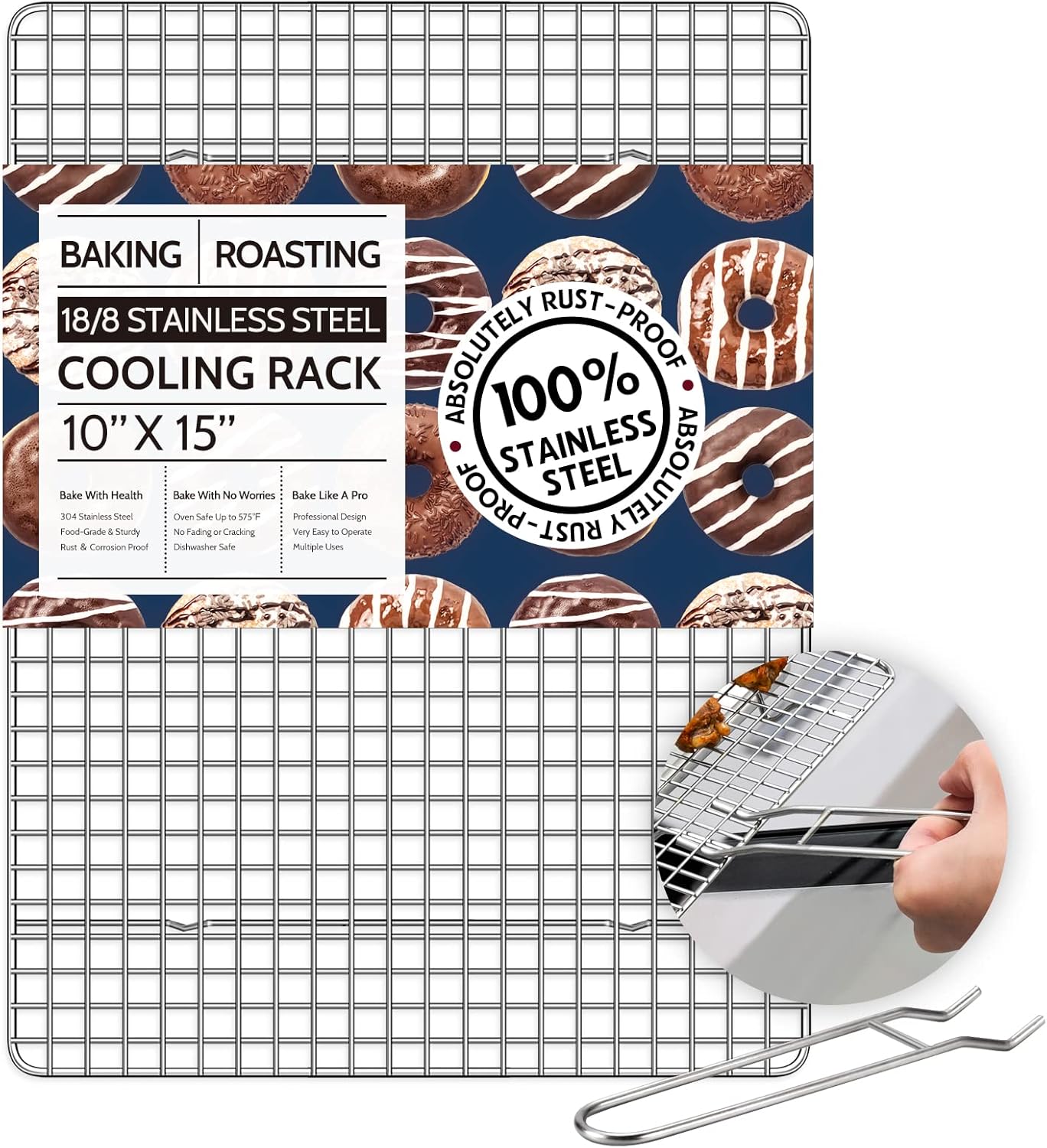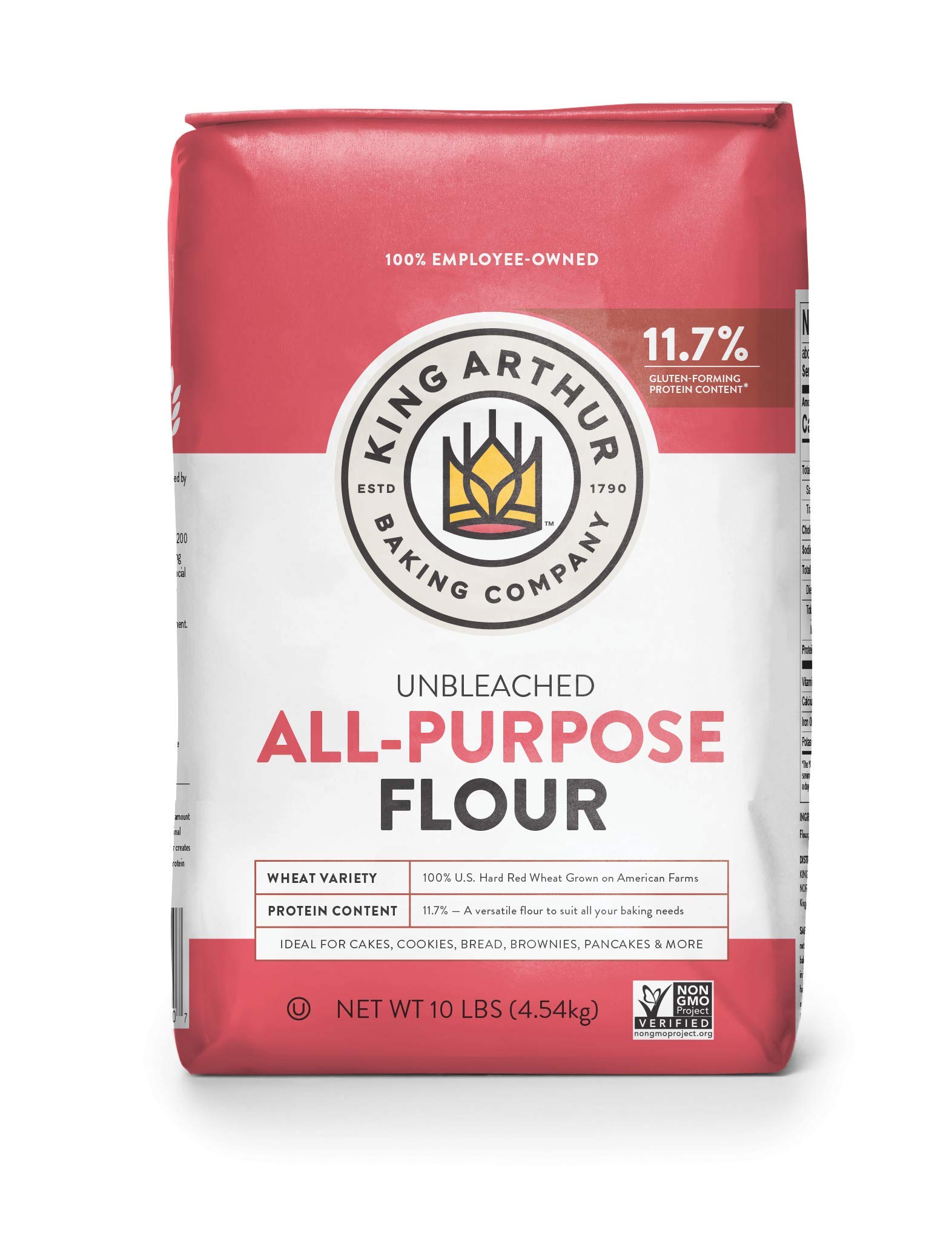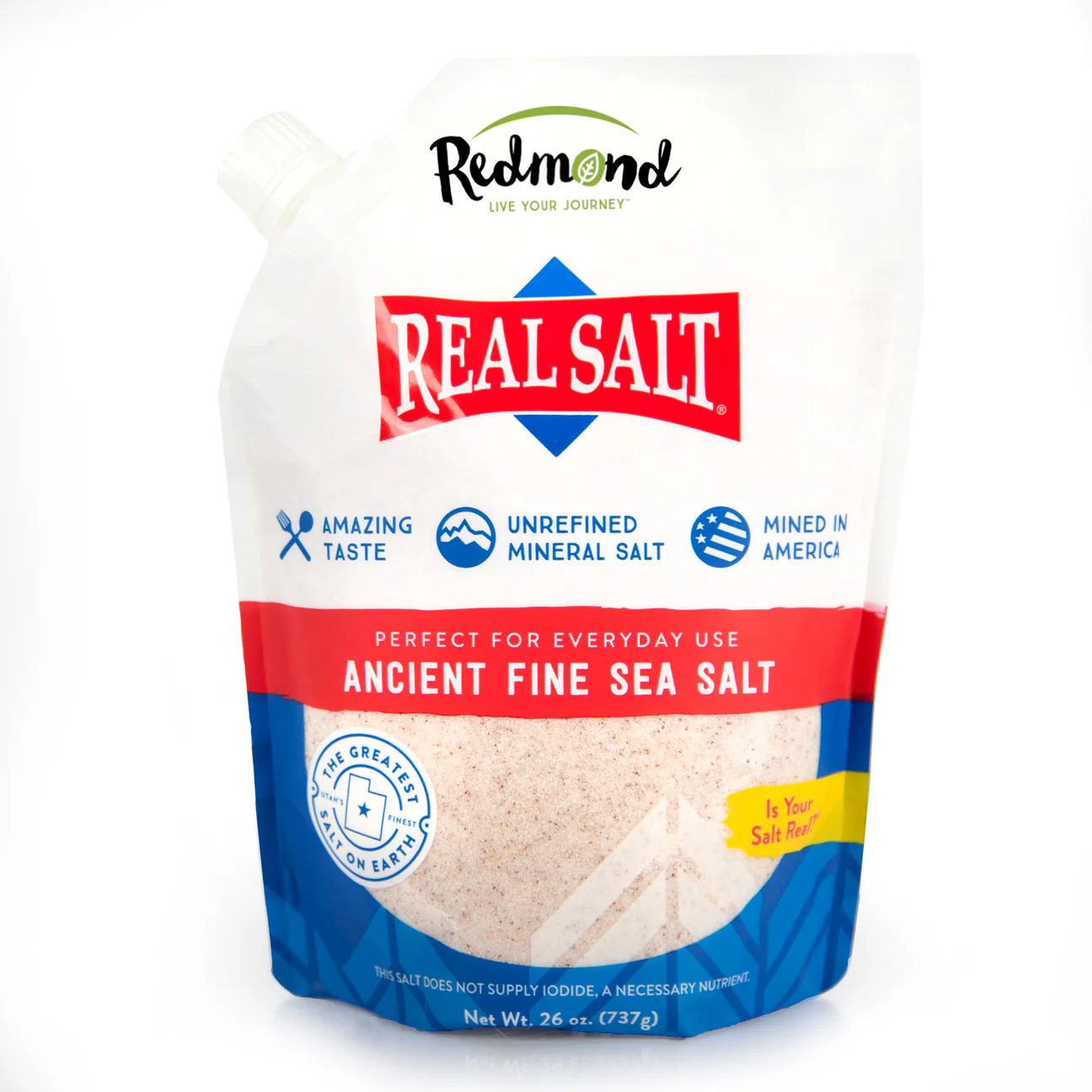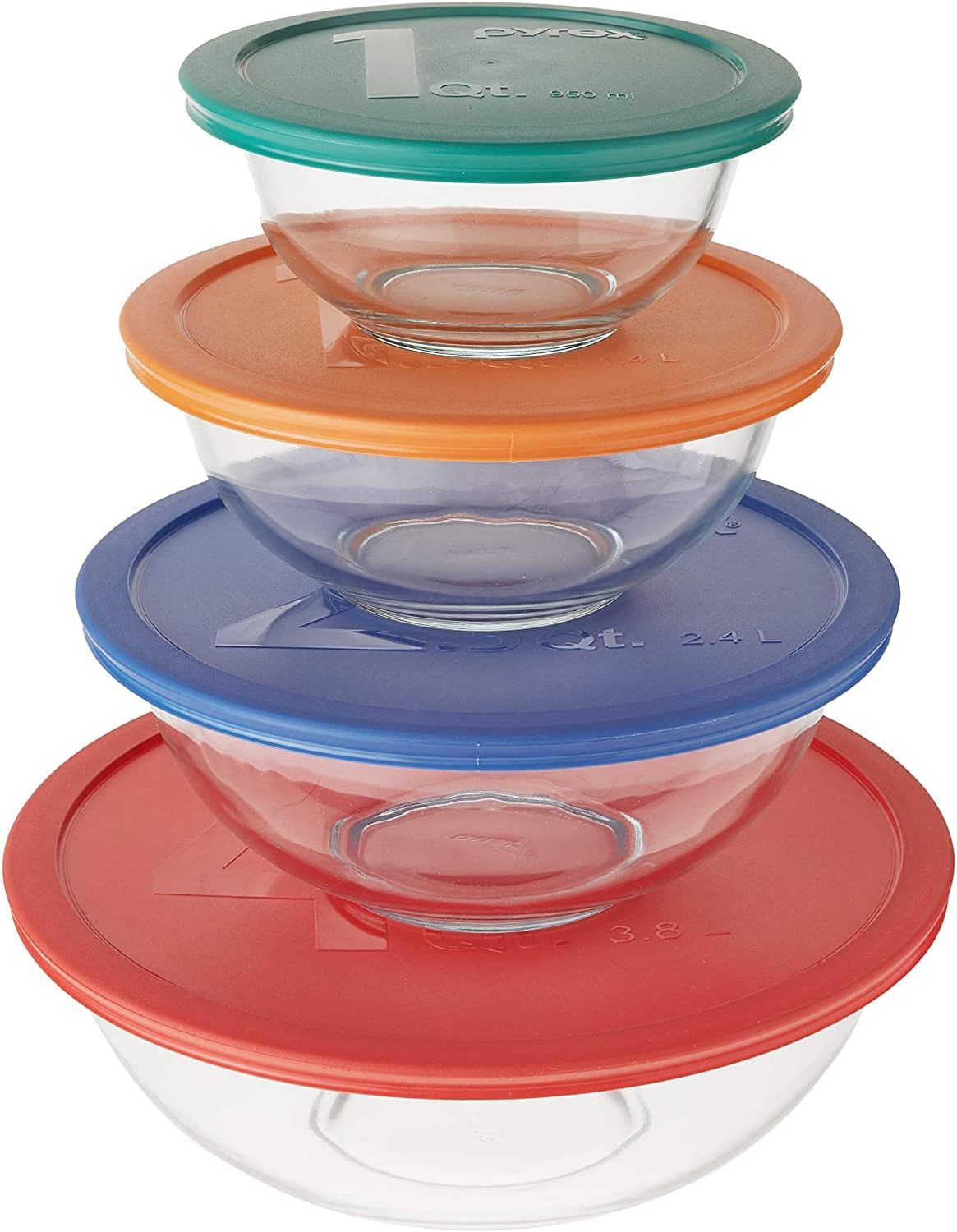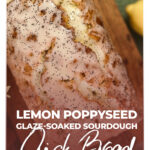About This Recipe
Starbucks’ lemon loaf just got an upgrade with added poppy seeds for a little crunch and my signature cream cheese twist for extra creaminess and moisture. This lemon poppy seed bread is packed with bright lemon flavor, perfectly moist, with just the right balance of tart and sweet. Plus, I used my Ankarsrum mixer with the Stainless Steel Beater Bowl to bring this batter together, which made the whole process quick and effortless.
What is Lemon Poppy Seed Bread?
Lemon poppy seed bread is a sweet, citrusy loaf filled with bright lemon flavor and a little crunch from poppy seeds. It likely started as a twist on classic pound cake, with home bakers adding lemon for freshness and poppy seeds for texture. Over the years, it’s become a go-to recipe in many kitchens—something easy to whip up with simple ingredients. People love making it for brunch, sharing it with friends, or enjoying a slice with their afternoon coffee. It’s the kind of cozy, homemade bake that never goes out of style.
Why Poppy Seeds?
I recently had a follower ask if poppy seeds actually add any value to lemon poppy seed bread, since they couldn’t have them due to their connection to opiates. While lemon and poppy seeds are a classic, nostalgic combo, the seeds aren’t essential. They don’t add much flavor, just a bit of visual interest and a subtle crunch. If you need to leave them out, the loaf will still be just as bright, moist, and delicious. It’s all about the lemon, anyway.
Using A Mixer For Quick Bread
If you know me, you know I love my hand mixer for whipping up simple batters, but for this recipe, it was time for an upgrade. Instead of reaching for the usual hand mixer or spoon, I let my stand mixer take over. Ankarsrum’s Stainless Steel Beater Bowl is versatile enough for any whisking, beating, or mixing task, so I knew it would be perfect for this recipe. And it did not disappoint. The process was super efficient, the batter came out perfectly mixed (shoutout to the cookie whisks!), and my counters stayed spotless. The Stainless Steel Beater Bowl is also dishwasher safe, making cleanup an absolute breeze. Ankarsrum is running a promotional right now for this accessory (ends May 31st, 2025), so don’t miss it!
Oh—and have you seen Ankarsrum’s new Cloudy Pink pastel shade? It’s dreamy, inspired by pink clouds, cotton candy, and silky sorbets. If that’s not your vibe, no worries! They have a whole lineup of colors to suit any kitchen.
I love my Ankarsrum mixer; it’s my go-to for making all kinds of bread dough. You’ll find it featured in all kinds of recipes across my blog. If you’re thinking of getting one, I’d be so grateful if you used my affiliate link!
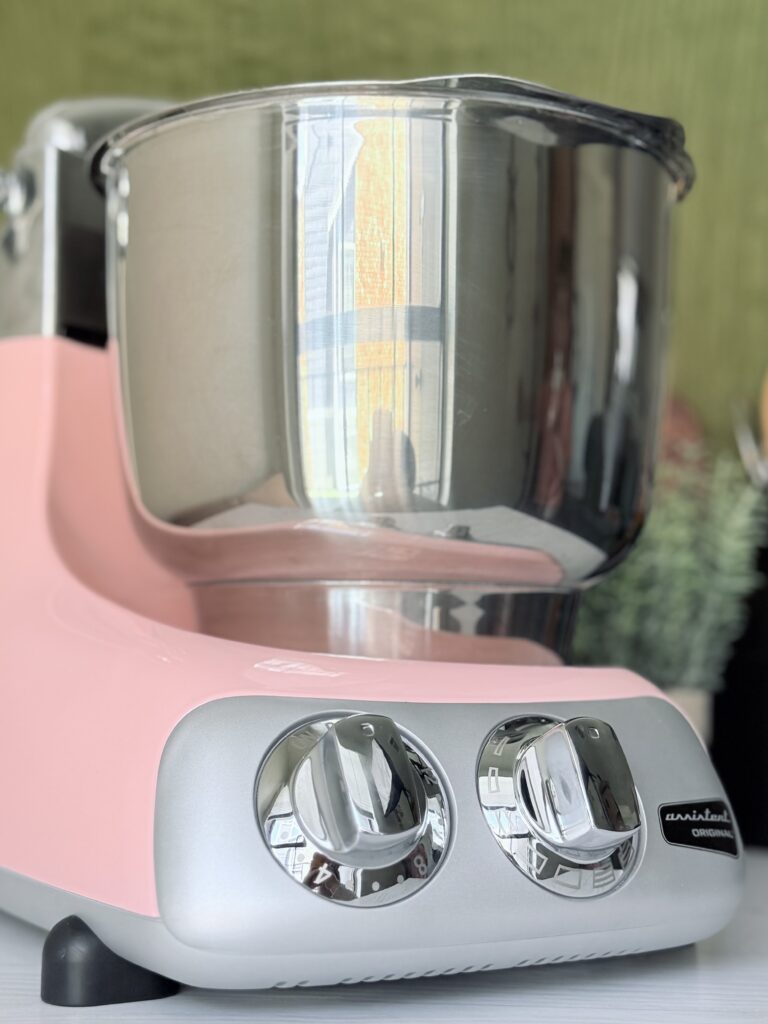
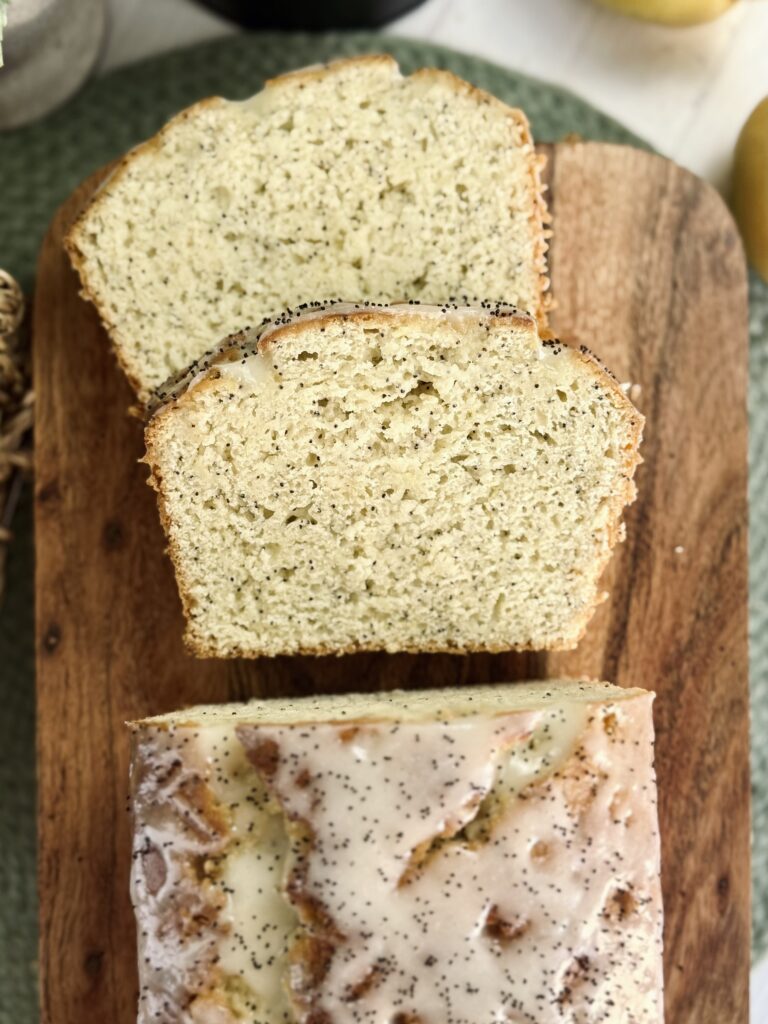
What I Love About This Recipe
Perfectly balanced with bold, bright lemon flavor, a beautiful aesthetic, and the crunch of poppy seeds, this loaf is an absolute dream. Quick to make, easy to clean up—what’s not to love?

The “Why” Behind The Ingredients
Sugar
Sugar is primarily a sweetener, but it also plays a role in keeping the bread moist. In a quick bread like this one, the sugar content typically falls somewhere between a cake, which contains the most sugar, and a sandwich bread, which has just enough (if any) to mellow out sourness. You can reduce the sugar if you prefer a more tart flavor, but keep in mind that doing so will result in a slightly drier loaf. For best results, I recommend using no less than three-quarters of a cup.
Lemon Zest
Using lemon zest is one way to majorly enhance the lemon flavor of a lemon recipe. The zest contains natural oils, which impart a strong flavor. It’s one of the three (okay, four) ways we add lemon to this recipe.
Cream Cheese
Cream cheese is one of my favorite ingredients to use in quick bread recipes because it improves flavor, moisture retention, and texture. It adds richness and a slight tanginess that balances sweetness and adds depth to the bread. With about 50-55% water content, cream cheese is naturally moist, helping keep the bread soft. It also contains a high percentage of fat (33%), which enhances the bread’s ability to retain moisture. Together, these things help create a velvety and tender crumb with a creamy texture.
Butter
While fat can have many purposes in a recipe, one major effect is moisture retention. Without it, the loaf would be dry and crumbly. Butter pairs well with the flavors of this dish, joining teams with the cream cheese to serve just this purpose: to keep the loaf from drying out.
Lemon Juice
Here’s the second ingredient that packs this bread with lemon: lemon juice itself. This addition is more mild, since most of the moisture from the juice evaporates in the oven, but what lingers is the brightness. It sharpens the flavor just enough to balance the sweetness and bring out the zest.
Eggs
Eggs contain proteins that help trap air during mixing and baking, which leads to a lighter, fluffier, and more structured bread. They’re also about 75% water, so they contribute to the overall moisture. In general, more eggs makes the texture more cake-like. For a quick bread like this, two to four eggs strike the perfect balance: not too dense, but not overly cakey either.
Sourdough Discard
Sourdough discard adds both moisture and binding power to this recipe. After all, it is just flour and water that’s been packed with flavor through fermentation. I balance the discard with the other sources of moisture (lemon juice and eggs) and structure (flour and poppy seeds) to create a loaf that’s tender, flavorful, and well-structured.
It’s worth noting that adding sourdough discard won’t always make your bread taste sour. That depends on how you maintain your starter and how old your discard is. You can taste a small amount before baking—it’ll give you a sense of how tangy the final loaf might be. Sour flavor comes from acids that build up over time, so older discard tends to bring more tang. That said, I’ve rarely noticed much sourness. That’s partly because my discard is usually well balanced, but also because the lemon adds its own bright tang, and the sugar helps smooth it all out.
Vanilla
Vanilla adds a sweet, warm, and slightly floral note that balances the sugar, lemon, and other flavors, making the bread taste richer and more complete.
All-Purpose Flour
While I do try to eliminate flour in some of my discard recipes, it is not possible with this one. Flour adds necessary structure to what would otherwise be a soupy batter. For this bread, I like the batter to be slightly on the firmer side (though not too firm), which helps create a taller dome on the top. But too much flour can tip the balance, resulting in a loaf that’s dry and dense instead of moist and fluffy.
It is worth noting that all-purpose flour, or even cake flour, is far better suited for quick breads than bread flour. In fact, the lower the protein content, the better. That’s because we don’t want gluten development in this kind of recipe. Just like we mix the batter only until incorporated, we use low-protein flour to avoid creating a chewy texture—which works beautifully in bread, but not in baked goods like this.
Leavening
This recipe uses a balance of baking powder and baking soda for leavening, rather than relying on the sourdough discard. That means you can bake your bread right away—no need to wait for sourdough to work its magic. I prefer chemical leavening in discard recipes because we’re using starter that’s past its peak and may not rise well. While it’s true that adding fresh flour can feed the yeast and trigger a slow rise, breads leavened this way often turn out more sour (thanks to the multiplying bacteria that create that tang) and still might not rise properly.
If you want to experiment with long fermentation, try refrigerating the batter and wait to add the baking powder and soda until just before baking. While the yeast in your discard won’t be very active in the cold, the bacteria will continue to break down the flour. Adding the leavening agents at the end ensures your loaf gets the lift it needs, since the yeast alone won’t be able to do that on its own.
Poppy Seeds
Poppy seeds are a classic, nostalgic addition that is often paired with lemon. While they don’t add much in terms of flavor, they add visual appeal and subtle crunch that enhances the texture of the bread. Just be careful not to overdo it, as poppy seeds can absorb moisture from the batter. In my test kitchen, 10-15 grams seems to strike the perfect balance.
Salt
Salt brings out flavor. I use just a touch in this recipe to enhance all the flavors in this quick bread.
Simple Syrup
Here’s the third lemon infusion, and probably the most important. In this recipe, we make a simple syrup by combining lemon juice and sugar, then pour it over the bread while it’s still hot from the oven. This simple step not only replaces moisture lost during baking, but it also carries bright lemon flavor into every crevice of the loaf, giving you a more pronounced, vibrant lemon taste. If you really want the lemon to shine, don’t skip this part.
You might wonder why we don’t just pour plain lemon juice over the bread. The answer is balance. Straight lemon juice is too acidic on its own—it can make the bread taste harsh and even affect the texture. By making a syrup, the sugar softens that sharp edge and helps the flavor meld more evenly with the bread. It’s the perfect finishing touch that brings the whole loaf together.
Glaze
For this recipe, I don’t make a true frosting and I don’t make a classic glaze—it’s something in between. It’s quickly becoming one of my favorite finishes because it’s minimal and simple, yet it adds a beautiful, polished touch. Light and creamy, this glaze doesn’t require the loaf to be fully cooled before applying, thanks to the cream cheese. It’s also the fourth and final lemon element, adding a subtle citrus finish right on top.
I especially love this glaze because it covers the tiny holes left by the simple syrup and gives the loaf a clean, finished look. It’s not essential, but I wouldn’t skip it.
Garnish
Why not sprinkle a few extra poppy seeds on top to make this loaf shine? Totally optional, just undeniably beautiful. A light dusting of lemon zest would be just as lovely.
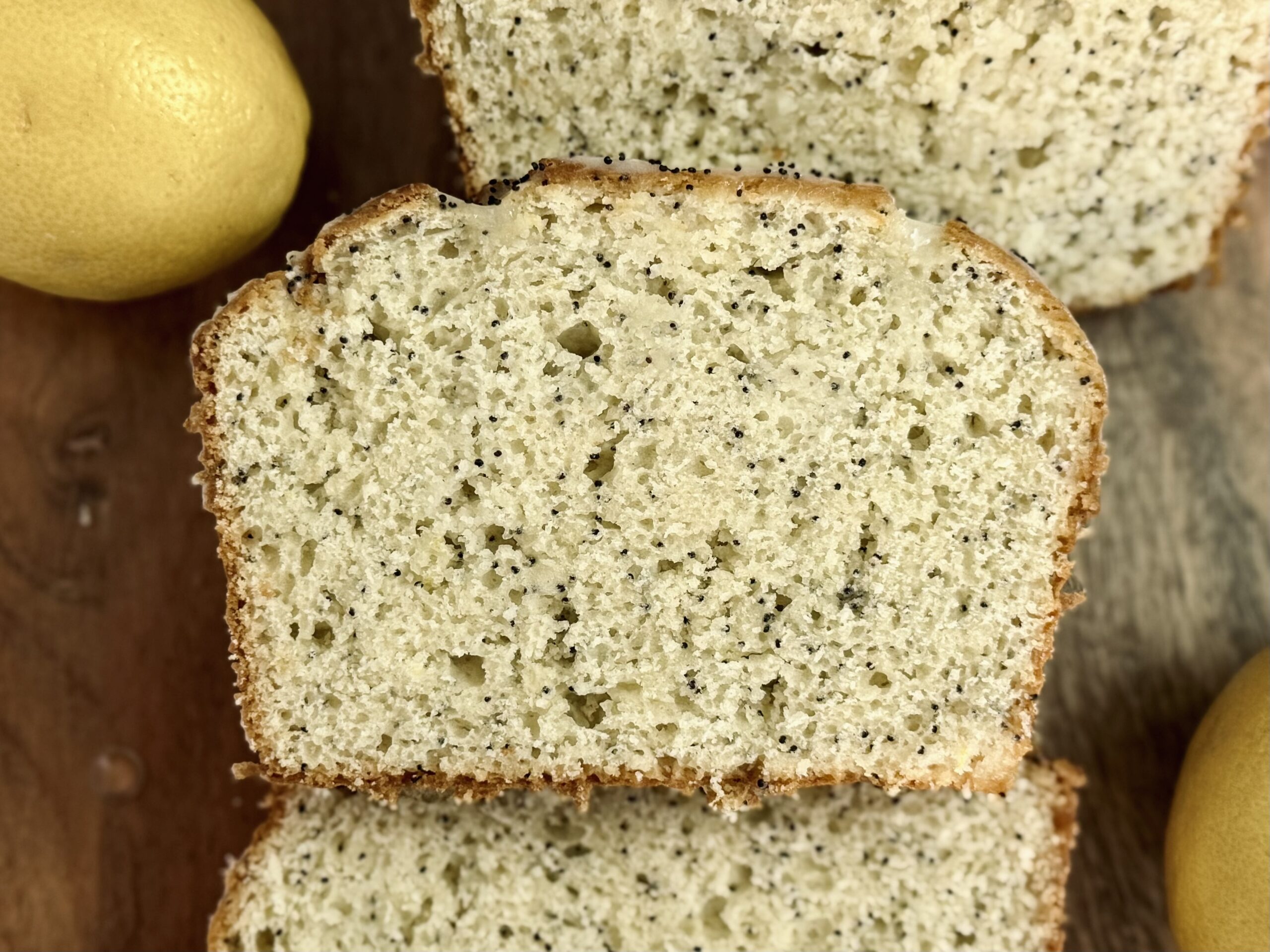
The “Why” Behind The Technique
Sugar + Zest
Rubbing the zest into the sugar helps release its oils, intensifying the lemon flavor and ensuring it’s evenly distributed throughout the batter. It’s a simple step, but it makes a big impact.
Cream Butter, Cheese, And Sugar
Creaming the butter, cream cheese, and sugar before adding the other ingredients lays the groundwork for a smooth, even batter and a well-balanced loaf. Fully combining these ingredients at the start prevents clumps and helps the dry ingredients incorporate more evenly later. This step also adds a bit of air to the mixture, contributing to a lighter, more tender crumb.
Single Wire Whisks
If you’re using an Ankarsrum mixer (my all-time favorite mixer, which I highly recommend for all kinds of bread), you’ll need to choose between the Balloon Whisks and the Single Wire Whisks. The main difference between the two is how much air they incorporate. The Balloon Whisks have more wires, which means more aeration. But for a quick bread batter, we don’t want to whip in too much air—especially since we’re already using leavening agents to provide lift. What we’re after is just enough air to support the structure and a smooth, evenly mixed batter without overworking it.
In this case, the Single Wire Whisks are the better choice: they give you the control and texture you want, without over-aerating the mix.
Wet Ingredients One At A Time
Adding each of the remaining wet ingredients one at a time is just another way to ensure a smooth and efficient mix.
Sift Dry Ingredients
While poppy seeds and certain salts won’t pass through a sifter, sifting the flour and leavening agents helps break up clumps and ensures even distribution, leading to a smoother mix and a better batter overall.
Mix Until Just Incorporated
When the flour is added, we run into a gluten problem. Too much mixing encourages gluten development, which leads to a chewy texture—the opposite of what we want in a tender quick bread like this one. That’s why gentle mixing at this stage is key: just enough to bring the batter together, and no more.
Simple Syrup
When we make the simple syrup, the goal is just to dissolve the sugar—not to cook the mixture so much that it hardens into a candy-like texture. This simple step not only replaces moisture lost during baking, but it also carries bright lemon flavor into every crevice of the loaf, giving you a more pronounced, vibrant lemon taste. If you really want the lemon to shine, don’t skip this part.
Glaze
I use a small food processor to make my glaze because, why not? It’s simple and efficient, bringing everything together smoothly in almost no time.
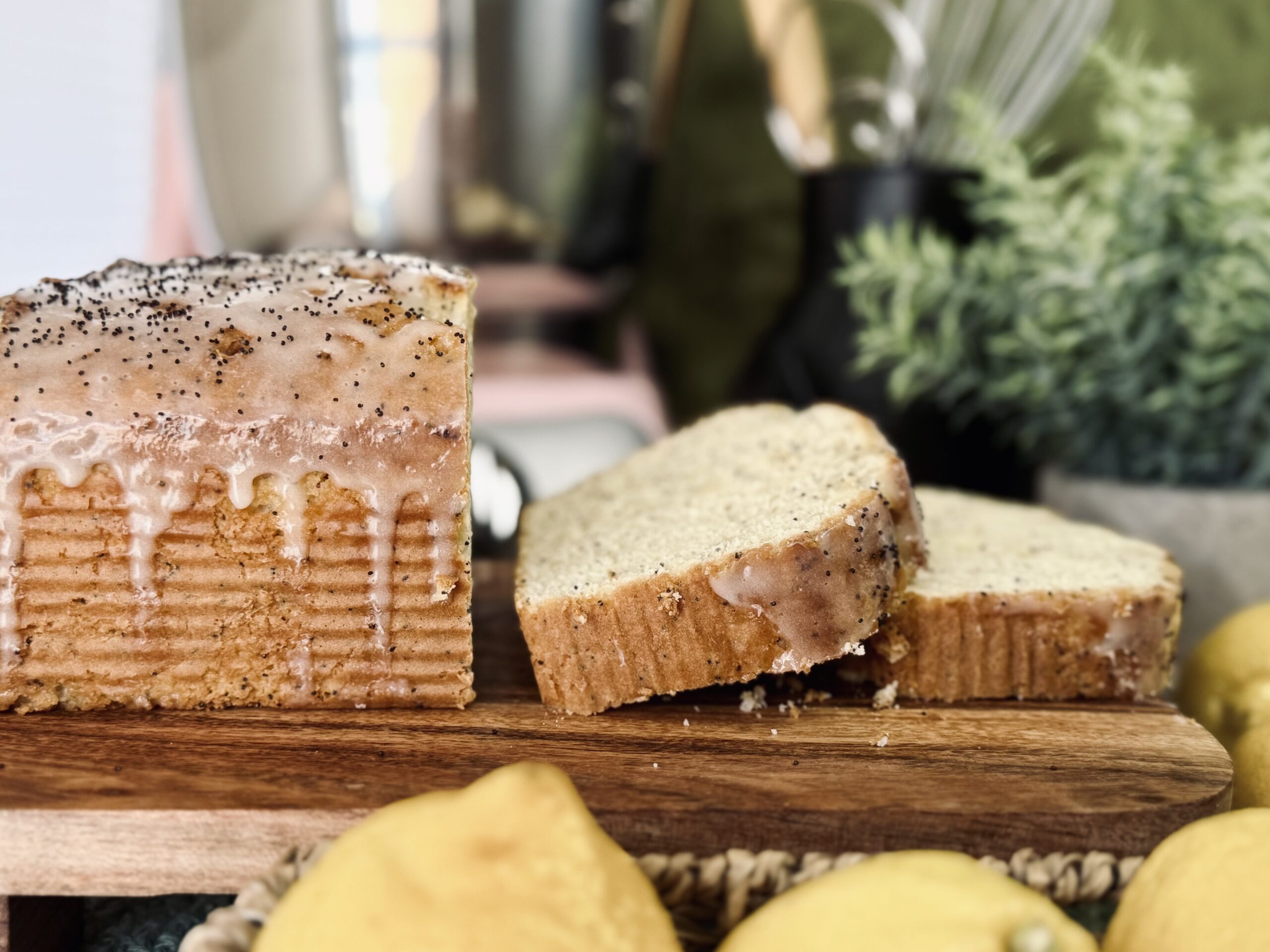
📌 Quick Tip: Read the recipe in its entirety before you start cooking. This will help you understand the ingredients, steps, and timing involved, and allow you to prepare any necessary equipment or ingredients beforehand.
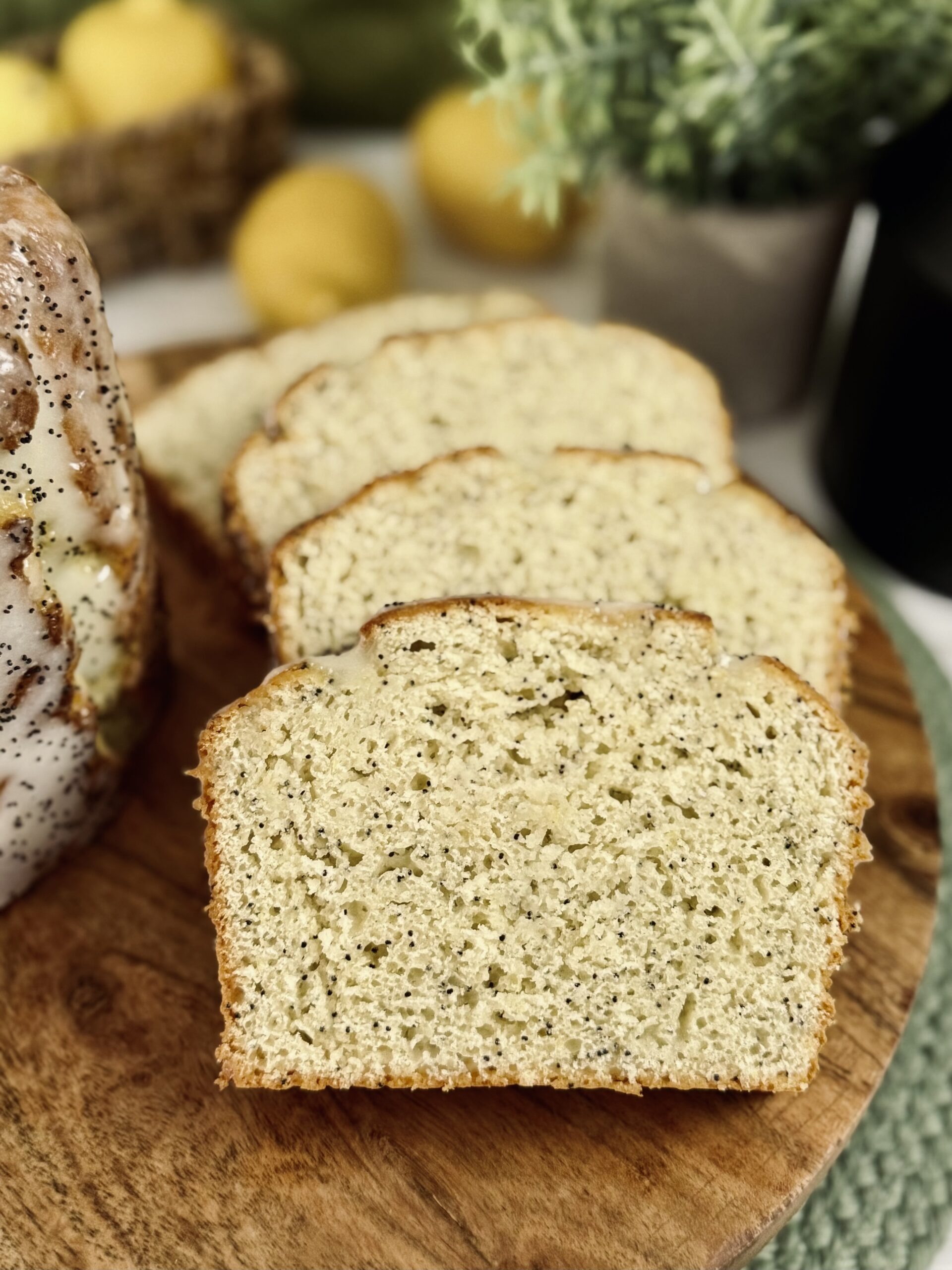
Lemon Poppy Seed Glaze-Soaked Quick Bread
Ingredients
For The Batter
For The Simple Syrup
For The Glaze
Instructions
For The Batter
-
Preheat an oven to 350°F (175°C).
-
Grease a 9X5 loaf pan and/or line with parchment paper. Set aside.
-
Massage the lemon zest into the sugar to help with flavor release.
-
In Ankarsrum's Stainless Steel Beater Bowl, add the cream cheese, sugar/lemon zest mixture, and butter. Using the Single Wire Whisks, start the mixer on the lowest speed (12 o'clock), then slowly increase the speed to medium (3-4 o’clock) and beat until the mixture is smooth and some air has been incorporated (about two to three minutes), scraping down the sides of the beater bowl as needed.
I like to add the cream cheese and butter in tablespoon-sized chunks, which can make mixing these ingredients more efficient. -
To the same bowl, add the lemon juice, eggs, sourdough discard, and vanilla extract one at a time, mixing on a medium-low speed (2-3 o’clock) to incorporate between each addition. Continue mixing until everything has been added and the mixture is smooth, scraping down the sides as needed. Set aside.
-
In a separate, medium-sized bowl, sift the all-purpose flour, baking powder, and baking soda. Add the poppy seeds and salt. Whisk to combine.
-
Turn the mixer to the lowest speed (12 o'clock) and slowly pour the dry ingredients into the wet ingredients. Mix until almost completely incorporated.
-
Transfer all the batter to your prepared 9X5 loaf pan. Smooth the top out so that everything bakes evenly.
-
Bake in your preheated, 350°F (175°C), oven for 50-55 minutes, or until a toothpick inserted comes out clean. Cover around the 40 minute mark if the bread is browning too quickly.
For The Simple Syrup
-
In a small saucepan, combine sugar and lemon juice.
-
Heat over medium-low heat, stirring until the sugar fully dissolves. Do not boil.
-
When the bread is finished baking (and still warm), poke holes all over with a skewer.
-
Slowly pour the warm syrup evenly over the bread.
-
Let the loaf absorb the syrup while it cools in the pan for 15–20 minutes before transferring it to a rack to cool completely.
For The Glaze
-
In a small food processor or blender, combine the softened cream cheese, lemon juice, and powdered sugar. Pulse until smooth.
-
Spread or drizzle the glaze all over the warm loaf of lemon poppy seed bread.
-
Garnish with poppy seeds, if desired. Enjoy!
Nutrition Facts
Servings 12
- Amount Per Serving
- Calories 377.65kcal
- % Daily Value *
- Total Fat 12.04g19%
- Saturated Fat 6.44g33%
- Trans Fat 0.2g
- Cholesterol 74.08mg25%
- Sodium 318.3mg14%
- Potassium 128.95mg4%
- Total Carbohydrate 61.87g21%
- Dietary Fiber 1.7g7%
- Sugars 33.63g
- Protein 7.07g15%
- Vitamin A 105.7 mcg
- Vitamin C 14.28 mg
- Calcium 98.39 mg
- Iron 2.22 mg
- Vitamin D 0.25 mcg
- Vitamin E 0.54 mg
- Vitamin K 0.9 mcg
- Thiamin 0.31 mg
- Riboflavin 0.29 mg
- Niacin 2.19 mg
- Vitamin B6 0.07 mg
- Folate 27.37 mcg
- Vitamin B12 0.15 mcg
- Phosphorus 155.59 mg
- Magnesium 18.85 mg
- Zinc 0.66 mg
* Nutrition values are auto-calculated and should be used as an approximation only.

Notes
- Storage: Store the completely cooled loaf covered at room temperature for up to five days. No need to reheat. Enjoy from room temperature.
- If you don't have an Ankarsrum mixer, you can still make this recipe! Use the paddle attachment on your mixer, a hand mixer, or just a whisk and spoon to combine the batter.



